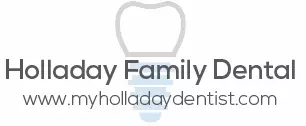
03 Jun 2016 Myth #1 Don’t Brush If Your Teeth Are Bleeding
It seems counter-intuitive to brush teeth if the gums are bleeding. After all, they will bleed even more if brushed! Blood in the gums means that plaque has built up around the teeth.
The plaque hardens into a calcified material that irritates gum tissue and can cause bleeding.
First line of defense
Floss between the teeth, below the gums and along the gum line to remove as much plaque as possible. Do not press the floss hard against the gums. When finished, brush gums and teeth with a soft or medium bristled tooth brush. Brushing teeth and gums is always the first line of defense, even though it appears the bleeding may get worse. After a thorough brushing, rinse the mouth with either peroxide or plaque-reducing mouthwash.
Second line of defense
See your dentist for a thorough scaling and cleaning. Bleeding gums are a symptom of gingivitis, which is a precursor to periodontal disease. Even though there may be no pain at all, gum disease is very serious, because teeth can loosen from the surrounding tissues and fall out. The infection does not stay in the mouth, but can also cause inflammation, heart disease and stroke. As it is, the sooner a person deals with blood in gums, the better the chances of a healthier mouth.
The dentist will scale away the hardened plaque with an instrument called a curette. Next, he or she will use a polishing device to smooth the surface of the teeth, particularly under the irritated gums. Instead of making bleeding gums worse, the polishing and brushing process improves blood flow and promotes healing.
Prevention
Prevention of gum disease means properly flossing and brushing teeth, even if some bleeding still occurs. It is important to brush each tooth separately and thoroughly, and also floss away plaque adhering to teeth, using a smooth motion of the floss flush against the tooth.
Healthy diet
Many people have teeth susceptible to damage from sugars and simple carbohydrates. These foods create the ideal environment for plaque to form. Healthier choices in foods include fresh vegetables, fruits and protein. These foods promote strong gums and teeth. When sweets are consumed,it is important to floss and brush soon afterwards to remove debris that can contribute to plaque formation.
Certain health conditions, such as pregnancy or diabetes, may predispose a person to bleeding of the gums. A variety of medications, such as aspirin, can also be problematic. Do not stop brushing teeth and gums entirely because of bleeding. Have a dentist check and clean both teeth and gums in order to determine the cause of the bleeding.

